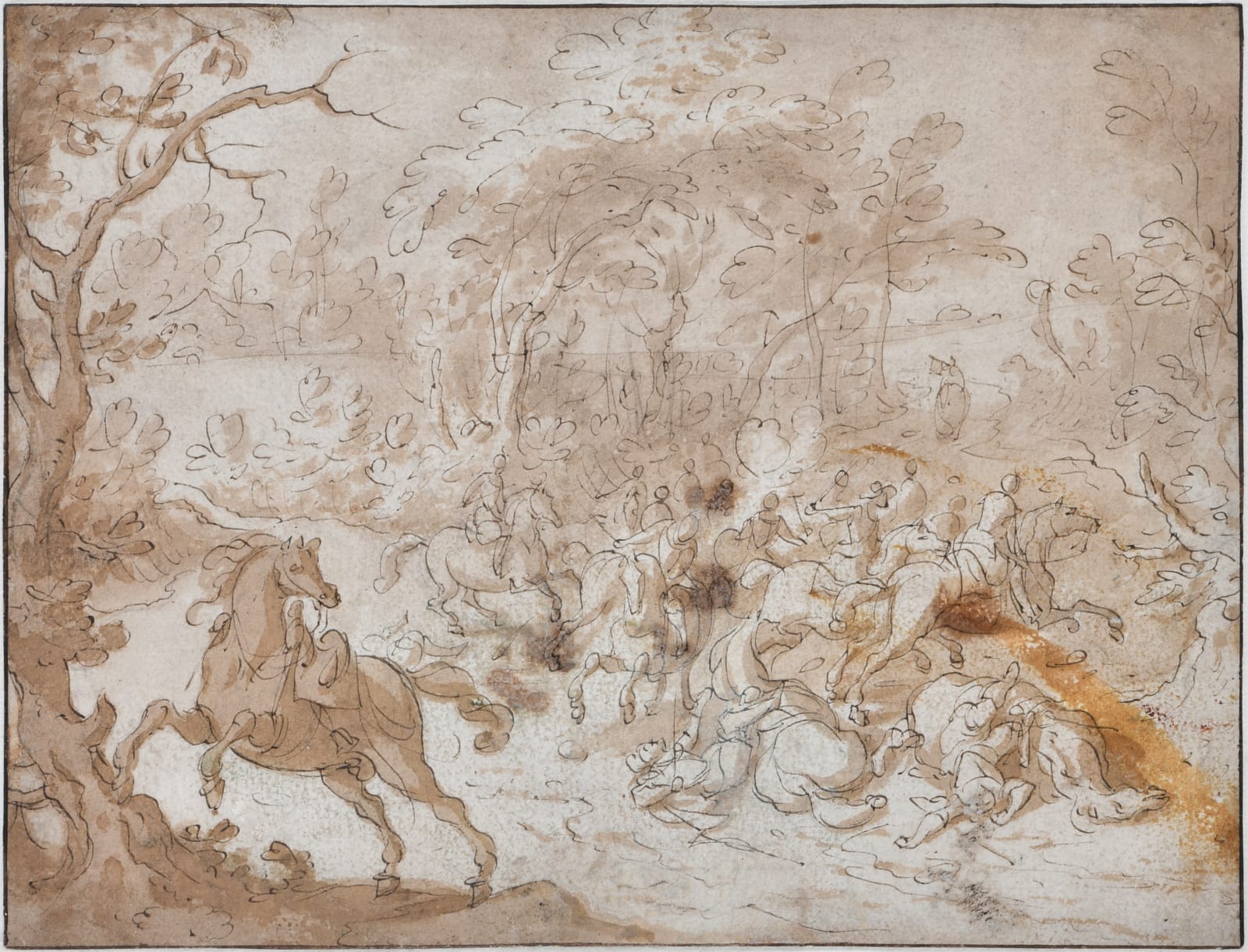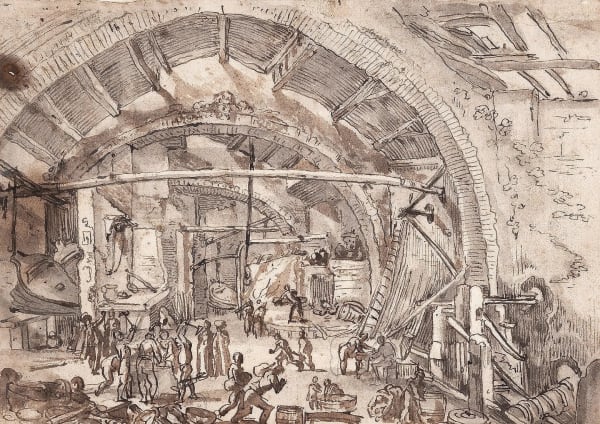Sebastiaen Vrancx (Antwerp 1573 - 1647)
Sebastiaen Vrancx was born in Antwerp in 1573. After his training in the workshop of Adam van Noort, who also taught several other leading Antwerp painters, such as Peter Paul Rubens and Hendrick van Balen, he travelled to Italy around 1597, where, in Treviso, he met his countryman and fellow painter Ludovico Pozzoserrato (born Lodewijk Toeput), who greatly influenced him. After his return to Antwerp, he registered as a member of the guild of St Luke in 1600 and he became its dean in 1612. He taught several students, such as the well-known cavalry painter Pieter Snayers. In 1613 he became an officer of the Antwerp civic guard and he was promoted to captain in 1621. Vrancx was also an avid fencer. Influenced by these (para)military experiences, he specialized in paintings depicting cavalry and battle scenes and robberies, which make up over half his known oeuvre and for which he is best known today.
However, research has shown that Vrancx successfully pursued other activities as well. Not only was Vrancx an engraver, he was also a leading member of De Violieren, the well-known Antwerp Chamber of Rhetoric for which he created a beautiful heraldic shield in collaboration with his fellow members Jan I Brueghel, Hendrick van Balen and Frans II Francken. The shield is still kept in the Royal Museum of Fine Arts of Antwerp today. Sebastiaen Vrancx was also a respected writer who wrote several plays, none of which, sadly, have been preserved. It is probably in this context that his work on a series of over sixty drawings illustrating scenes from Virgil's Aeneid - of which he possibly also made a new translation into Dutch - must be seen.
Besides battle scenes, Vrancx painted cityscapes, (winter) landscapes and several series of the seasons and the months of the year. More recently, he has also emerged as a painter of allegories and genre scenes featuring cats and monkeys. Architecture was another of Vrancx’ interests, as can be seen in several of his drawings and paintings. In short, far from being a ‘one-trick-pony’ as has been said in the past, he was actually quite a versatile artist. The present work however, may be considered vintage Vrancx: a cavalry skirmish in a forest, with rearing horses, riders falling off their mounts and all the other hustle and bustle of battle. Interestingly, while the artist certainly sometimes made picture drawings (fully finished works of art, produced for collectors), our sheet is a preparatory work for a painting, as it is executed in exactly the same style as other known studies and sketches by the artist.
The corresponding painting is not (yet) known, perhaps having been lost to the sands of time, but it was probably a small-sized cabinet painting on panel or copper, made for a discerning audience of civilised city-dwelling collectors who enjoyed these depictions of battle set somewhere in the countryside. It is fascinating to see how the artist sketches the horsemen almost as compositions of geometrical forms, with no ideosyncratic features, their drawn swords no more than single lines protruding from their hands. The whole, which actually looks quite modern, was evidently drawn fluently and effortlessly, showing off Vrancx' enormous skill as a draughtsman. Interestingly. there are a few oil stains on the sheet, indicating the artist held the sheet with oily fingers, probably while working on the finished composition. Rather than detract from the work however, they bring the working practice of the artist to life, giving us a fascinating insight in Vrancx' work process.
Provenance
Private collection, France.
- X
- Tumblr
-
 Sebastiaen Vrancx (Antwerp 1573 - 1647)Ascanius killing Silvia's favourite Stagpen and ink, brush and wash on laid paper115 x 157 mm
Sebastiaen Vrancx (Antwerp 1573 - 1647)Ascanius killing Silvia's favourite Stagpen and ink, brush and wash on laid paper115 x 157 mm -
 Sebastiaen Vrancx (Antwerp 1573 - 1647)The Forgepen and brush in brown, over black chalk, on laid paper180 x 240 mm
Sebastiaen Vrancx (Antwerp 1573 - 1647)The Forgepen and brush in brown, over black chalk, on laid paper180 x 240 mm -
 Sebastiaen Vrancx (Antwerp 1573 - 1647)A Country Marketbrush in brown on paper110 x 147 mm
Sebastiaen Vrancx (Antwerp 1573 - 1647)A Country Marketbrush in brown on paper110 x 147 mm



